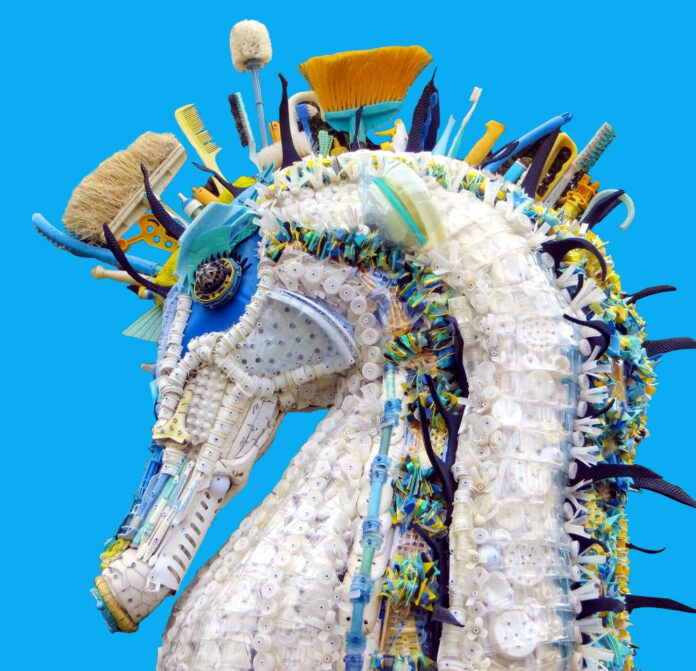“The Washed Ashore Project creates powerful art that captivates all ages and teaches environmental conservation and sustainability.
“The Washed Ashore Traveling Exhibits feature collections of intricate, beautifully designed, giant sea life sculptures made entirely of marine debris collected from beaches. The sculptures of marine life graphically illustrate the tragedy of plastic pollution in our oceans and waterways and to encourage conservation. Teacher, staff and docent workshops lead by our expert education team combining art, science and environmental issues are included in the exhibit package. Additional workshops and presentations are also available.,” (WashedAshore.org, Host an Exhibit: Traveling Exhibitions).
Washed Ashore is a nonprofit organization that creates art installations in parks, museums, gardens, on beaches, and at other educational organizations. These installations are constructed out of trash collected from beaches across the United States and aim to increase visitation in a way that raises awareness of environmental issues.
“Research out of Scotland suggests that the chopping, shredding and washing of plastic in recycling facilities may turn as much as six to 13 percent of incoming waste into microplastics—tiny, toxic particles that are an emerging and ubiquitous environmental health concern for the planet and people.
“A team of four researchers measured and analyzed microplastics in wastewater before and after filters were installed at an anonymous recycling plant in the United Kingdom. The study, one of the first of its kind, was published in the May issue of in the peer-reviewed Journal of Hazardous Material Advances.
“If the team’s calculations are ultimately found to be representative of the recycling industry as a whole, the scale of microplastics created during recycling processes would be shocking—perhaps as much as 400,000 tons per year in the United States alone, or the equivalent of about 29,000 dump trucks of microplastics. The study suggests that rather than helping to solve plastics’ contribution to what the United Nations has described as a triple planetary crisis of pollution, climate change and biodiversity loss, recycling could be exacerbating the problem by creating an even more vexing conundrum,” (Bruggers, 2023).
Does this mean the installations are doing more harm than good?
I reached out to Washed Ashore and asked them for more information, hoping to learn more about their construction process. I have not yet received a response. Even though Washed Ashore has good intentions, it’s important to consider the ramifications of the process they are using. Creating these sculptures requires drilling and assembling small pieces which creates microplastics. It is also likely that the sculptures utilize glue to ensure that pieces to not fall or break off during transportation and installation. Installations in outdoor environments are subject to weathering and erosion, and introducing large structures of unregulated and repurposed materials from the trash could cause harm to their environments.
This is an important thing to keep in mind throughout the capstone project. Though I may have good intentions, good intentions don’t negate poor planning. I must be very deliberate in my choices to ensure that my project doesn’t cause more damage in the long run.
References
James Bruggers. (2023, May 16). Who Said Recycling Was Green? It Makes
Microplastics By the Ton. Inside Climate News.
https://insideclimatenews.org/news/16052023/
recycling-plastic-microplastics-waste/
Washed Ashore. (n.d.). [Art installation made out of beach trash]. Washed
Ashore. https://www.washedashore.org/galleries/
Washed Ashore. (n.d.). Host an Exhibit: Traveling Exhibitions. WashedAshore.org.
Retrieved September 3, 2024, from https://en1.0f5.myftpupload.com/
exhibit-locations/




